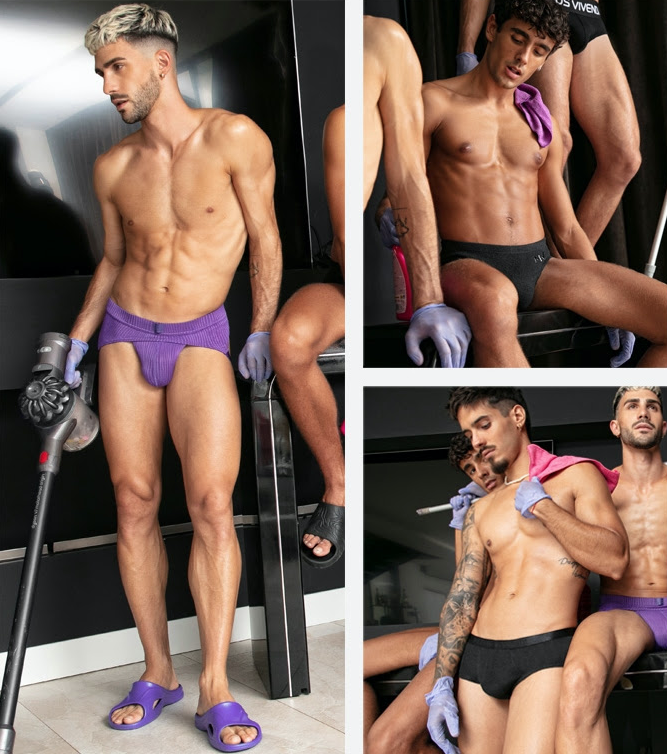
In the vast realm of fashion, the often-overlooked world of men’s underwear has undergone a remarkable transformation over the years. While outerwear styles steal the spotlight, the evolution of men’s innerwear has been equally fascinating. From humble beginnings to the latest innovations, the journey of men’s underwear reflects changing fashion trends, societal shifts, and technological advancements. This blog will explore the history of men’s underwear – an intimate journey through time.
Today’s Men’s Underwear Trends
Contemporary trends in men’s underwear encompass a broad spectrum of designs, materials, and cuts, catering to various preferences and lifestyles. From sleek and supportive boxer briefs to the classic comfort of briefs, and the modern appeal of trunks, men now have a plethora of options to express their personal style, even in the most intimate of choices. Innovative materials like moisture-wicking fabrics and sustainable options have also become popular, reflecting the industry’s commitment to both comfort and environmental consciousness. Go to Alphx to browse cutting-edge styles, offering a convenient and diverse shopping experience for the modern man looking to redefine his innerwear wardrobe.
The Early Years: Functionality Over Fashion
In the 19th century, men’s undergarments were a far cry from today’s diverse and stylish options. The primary purpose was functionality rather than fashion. Long johns, also known as union suits, were the go-to choice, offering full-body coverage to provide warmth in colder climates. Made from wool or flannel, these one-piece undergarments were practical but lacked the sophistication we associate with modern innerwear.
The Roaring Twenties: The Birth of Boxer Shorts
As the 1920s ushered in a new era of social liberation, men’s fashion followed suit. Boxer shorts emerged as a stylish alternative to the traditional long johns. Inspired by the loose-fitting shorts worn by boxers in the ring, these new undergarments were characterized by a relaxed fit and elastic waistbands. The adoption of boxer shorts marked a departure from the utilitarian approach, introducing an element of comfort and style to men’s underwear.
The Mid-Century Revolution: Briefs Take Center Stage
The post-World War II era saw a significant shift in men’s underwear preferences. Briefs, also known as tighty-whities, gained popularity for their snug fit and support. With their Y-shaped front fly and minimalistic design, briefs became synonymous with masculinity. This period also witnessed the introduction of nylon and other synthetic materials, revolutionizing the comfort and durability of men’s innerwear.
The 1960s and 70s: Bold Prints and Colorful Choices
Men’s underwear underwent a colorful transformation as the counterculture movement gained momentum in the 1960s and 70s. Bold prints, vibrant colors, and psychedelic patterns adorned boxer shorts, reflecting the societal shift towards self-expression and individuality. Brands embraced this newfound creativity, offering men a wider range of options beyond the conventional white briefs.
The 21st Century: Performance Fabrics and Designer Labels
In the modern era, men’s underwear has evolved to meet not only fashion preferences but also performance demands. High-performance fabrics like microfiber, modal, and moisture-wicking materials have become staples, offering breathability and comfort. Additionally, designer labels have entered the innerwear scene, turning men’s underwear into a fashion statement. Luxury brands now offer a variety of styles, from trunks to boxer briefs, catering to diverse tastes.
The Future: Sustainability and Technology
Looking ahead, the future of men’s underwear is likely to be shaped by two key factors: sustainability and technology. As environmental consciousness grows, there is a rising demand for eco-friendly materials and ethical manufacturing practices in the fashion industry, including innerwear. Furthermore, technological advancements may lead to innovations such as smart underwear with built-in sensors for health monitoring and temperature regulation.
Conclusion
The evolution of men’s underwear is a captivating journey that mirrors the broader changes in fashion and society. From the utilitarian long johns of the 19th century to the stylish and high-tech options available today, men’s innerwear has come a long way. As we continue to witness advancements in both design and functionality, one thing remains certain – men’s underwear will always be an integral part of the ever-changing landscape of fashion.

